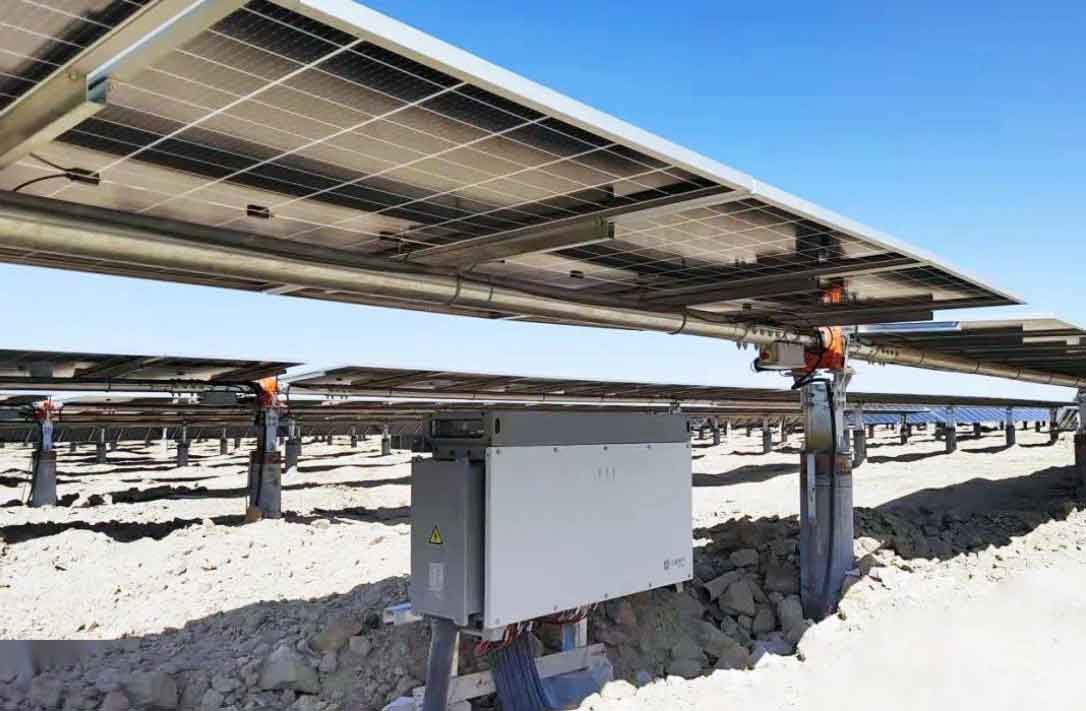
complete guide to string connected grid inverter would cover a variety of topics, from basic concepts to installation procedures, operating principles, maintenance, and troubleshooting. Here’s an outline to help you understand string connected grid inverter:
1. Introduction to String Connected Grid Inverter
- Definition and Purpose: Explains what string inverters are and their role in converting DC (Direct Current) from solar panels into AC (Alternating Current) usable by home appliances and for feeding into the power grid.
- Components of Solar Inverter Systems: Overview of solar panels, solar inverters, connection to the grid, and monitoring systems.
2. Types of Solar Inverters
- String Inverters vs. Microinverters vs. Central Inverters: Comparison of different types of solar inverters used in photovoltaic systems.
- Advantages of String Inverters: Cost-effectiveness, ease of installation, and ideal usage scenarios.
3. How String Inverters Work
- Basic Operation: Discussion on how string inverters convert DC to AC, including the role of MPPT (Maximum Power Point Tracking).
- Configuration of Solar Panels: How panels are arranged in series to form a string and connected to a single inverter.
4. Installation
- Site Assessment: Determining the suitable location and orientation for solar panels and solar inverter.
- Mounting and Wiring: Step-by-step guide on mounting solar panels, and connecting strings to solar inverter.
- Grid Connection: Requirements and procedures to connect solar inverter to the electrical grid.
5. Safety and Compliance
- Electrical Safety Standards: Key safety standards and regulations that need to be followed during installation.
- Building and Electrical Codes: Local code requirements for installation and grid connection.
6. Monitoring and Maintenance
- System Monitoring: Tools and techniques to monitor the performance of solar inverter and the entire solar power system.
- Routine Maintenance: Regular maintenance tasks to ensure optimal performance and longevity of solar inverter.
7. Troubleshooting and Common Issues
- Common Faults: Identification and troubleshooting of common problems like solar inverter not syncing with the grid, reduced power output, etc.
- Warranty and Support: Understanding warranty coverage and how to get support from manufacturers.
8. Future Developments
- Technological Advances: Emerging technologies in solar inverter design and solar power systems.
- Regulatory Changes: Potential future changes in laws and regulations affecting solar power systems.
9. Case Studies and Examples
- Real-world Installations: Case studies showcasing successful installations and how specific challenges were overcome.
10. Inverter Efficiency and Performance Metrics
- Efficiency Ratings: Explanation of how solar inverter efficiency is measured, including peak efficiency and European efficiency.
- Performance Metrics: Key performance indicators (KPIs) for evaluating solar inverter performance, including frequency and voltage regulation, total harmonic distortion, and response to changes in solar irradiance.
11. Advanced Features and Smart Functions
- Remote Monitoring and Control: Capabilities of modern solar inverter to connect to the internet for remote monitoring, firmware updates, and performance adjustments.
- Smart Grid Compatibility: Features that allow solar inverter to interact intelligently with the grid, such as demand response and load balancing.
- Battery Integration: How solar inverter work with battery storage systems to optimize energy usage and provide backup power.
12. Design Considerations for Larger Systems
- Scalability: Factors to consider when scaling up from small residential systems to larger commercial or industrial installations.
- String Sizing: Detailed guidelines on how to size strings correctly based on the number of panels, their wattage, and the maximum input voltage of solar inverter.
- Multiple Inverter Configurations: How to design systems that utilize multiple solar inverter to increase reliability and system output.
13. Environmental Considerations
- Impact on Inverter Lifespan: Discussion on environmental factors such as temperature, humidity, and exposure to elements that affect solar inverter longevity.
- Sustainable Practices: Best practices for minimizing environmental impact during the manufacturing, operation, and disposal of solar inverter.
14. Financial Aspects
- Cost Analysis: Breakdown of initial investment vs. long-term savings from using string inverter in solar installations.
- Incentives and Subsidies: Overview of financial incentives such as tax credits, rebates, and grants available for solar power installations using string inverter.
- Return on Investment (ROI): Calculating ROI based on system cost, energy savings, and maintenance expenses.
15. Legal and Regulatory Compliance
- Interconnection Standards: Requirements for connecting solar systems to the public grid, including technical specifications and safety protocols.
- Insurance and Liability: Understanding the insurance requirements and liability considerations when installing and operating solar systems.
16. Emerging Trends and Innovations
- New Technologies: Exploration of cutting-edge technologies in solar inverter and solar panel manufacturing that could enhance efficiency and reduce costs.
- Integration with Renewable Energy Systems: How string inverters are being integrated into broader renewable energy systems including wind and hydroelectric power.
17. User Training and Education
- Installation Training: Recommended training programs and certifications for technicians installing string inverters.
- Educational Resources: Books, online courses, and workshops available for homeowners and professionals to learn about solar technology.
Conclusion and Future Outlook
- Summary of Key Takeaways: Recap of the critical elements for understanding and utilizing string inverters.
- Future Prospects in Solar Energy: Anticipated developments in solar technology and the role of solar inverter in the transition to renewable energy.
Conclusion
Summarize the key points covered in the guide and the importance of understanding the intricacies of string inverter for anyone involved in the installation or maintenance of solar power systems.
Each section would typically include detailed instructions, diagrams for visual guidance, and tips from experienced professionals. For those installing or managing solar power systems, such a guide is invaluable for ensuring efficient operation and maximizing the return on investment in renewable energy technologies.
This comprehensive guide provides a solid foundation for understanding string connected grid inverter and their critical role in the solar energy landscape. Whether you are a homeowner looking to install solar panels, a technician specializing in photovoltaic systems, or an investor in green technologies, knowledge about string inverters is crucial for navigating the renewable energy field effectively.
